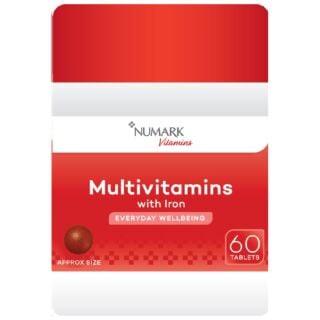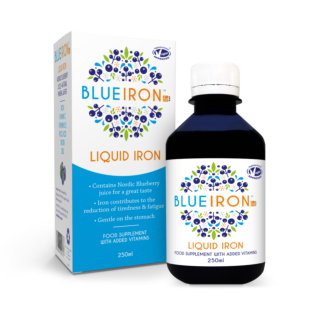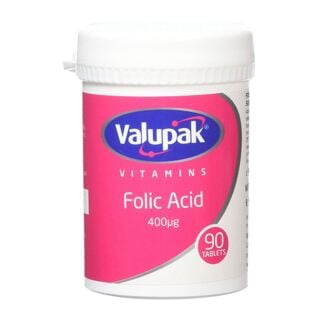7 surprising signs you may have iron deficiency anaemia

Iron deficiency anaemia is the most common type of anaemia. It is estimated to affect around 500 million people worldwide (according to NICE), and there is a higher prevalence in women, particularly pregnant women.
Many people struggle with the symptoms for a long time before diagnosis, they can often be mistaken for other conditions. There are some subtle and surprising symptoms of iron deficiency anaemia, and once you know what to look out for the better chance you have of getting a diagnosis and appropriate treatment.
Read on for signs and symptoms you may not associate with iron deficiency anaemia.

What is iron deficiency anaemia?
Iron deficiency anaemia occurs due to a severe lack of iron in the body. A lack of iron means the body can’t produce a protein known as haemoglobin found in red blood cells which are used to carry oxygen around the body.
This condition can be resolved by supplementing the body with much-needed iron.
What causes iron deficiency anaemia?
Iron deficiency anaemia is especially prevalent in women, and this is because the female body experiences more blood loss in its lifetime compared to men through menstruation. Those who have heavy periods are more at risk of developing this type of anaemia.
Pregnancy is also a leading cause of iron deficiency anaemia. In order for an unborn baby to receive nutrients and oxygen in the womb, your body needs sufficient iron levels for a good blood supply. There is a greater demand for iron during pregnancy to supply yourself and your baby with enough oxygen.
Other causes are related to conditions and medications that may cause blood loss. Stomach ulcers, inflammatory bowel disease, piles, and non-steroidal anti-inflammatory drugs (NSAIDs) are just some linked to iron deficiency anaemia. Even large amounts of blood loss through blood donation and trauma are a risk.
Another simple cause of iron deficiency anaemia is a diet lacking iron. Simply not eating enough greens, beans and whole grains can lead to an iron deficiency. To prevent this, ensure your diet is full of all the good stuff!
Symptoms of iron deficiency anaemia
Do you suspect you may be anaemic? If the below symptoms are sounding all too familiar then it’s time for a trip to the GP for a diagnosis.
Here are the 7 symptoms you didn’t know were related to iron deficiency anaemia.
Palpitations and shortness of breath
With iron deficiency anaemia you may at times feel like your heart is beating out of your chest, or your heartbeats may be irregular. This is due to the strain on your heart needing to work harder and faster to pump blood and carry oxygen around your body. Your heart is essentially compensating for the lack of haemoglobin.
Likewise, without the use of haemoglobin, your body’s oxygen levels are reduced and this can affect another major organ - the lungs. You may find that normal activities such as walking cause you to feel fatigued and short of breath.
Palpitations and shortness of breath can be linked to many other conditions such as anxiety, and anaemia may not be the first conclusion of these symptoms. However, if you are at risk of iron deficiency anaemia and you have other symptoms accompanied by this, it’s definitely worth considering the possibility of this condition and getting tested.

Dizziness
Again, a lack of oxygen caused by iron deficiency can result in lightheadedness. Similarly, extreme fatigue associated with this condition combined with a busy modern life is enough to make you feel weak and dizzy.
If you’re having frequent episodes of lightheadedness, the cause may be more than simply being burnt out. See your GP about the possibility of being anaemic.
Itching
Different types of anaemia can cause changes to the skin. In iron deficiency anaemia, it’s thought that skin can become thin resulting in more water loss. Dehydrated skin can become very dry and itchy. Itchy and bruised skin is characteristic of this type of anaemia.
Pruritis (itching) associated with anaemia can cause a red and bumpy rash as you scratch. In some cases, the itching can be a result of an allergy to some treatments for anaemia.
Tinnitus
As your heart works harder to pump blood and oxygen around your body, your highly sensitive ears may even hear the faster blood flow through nearby arteries. Pulsatile tinnitus as it’s known is described as being able to hear your own heartbeat loud and clear.
If you experience this type of tinnitus it’s important to have this investigated to rule out any serious underlying conditions.
A sore tongue
Like with any part of the body, if it lacks an adequate oxygen supply, problems can arise. The same can be said for the tongue. With iron deficiency anaemia, the tongue and tissue surrounding it can become sore and swollen, you may also have difficulty swallowing.
Cravings for unusual things
We’re not talking about craving your favourite meal here, we’re talking about cravings for items or substances that have no nutritional value such as ice or even paper! A sudden craving for paper may make you think something is wrong, and you’d be right.
This is a condition known as pica. These cravings are most associated with pregnancy but they can happen due to iron deficiency anaemia. In fact, since pregnancy and anaemia are so closely linked, it’s highly likely that those pregnancy cravings are due to a lack of iron or other vitamin deficiency.
It’s not fully understood why iron deficiency anaemia causes pica syndrome (it could be an attempt to fulfil some sort of nutritional need), but there is definitely a link and cravings usually stop when the iron deficiency is treated.
Pica is also linked to psychological disorders such as depression and anxiety.
Cold hands and feet
Cold hands and feet may simply be due to being, well…cold. However, if you frequently have cold hands and feet specifically, then it could be a sign of anaemia. Poor blood circulation as a result of insufficient haemoglobin can make these areas of the body feel constantly cold.
I think I may have iron deficiency anaemia, what now?

Some of the above symptoms are rare and the most common are fatigue, palpitations, shortness of breath, and pale skin. If you’re ticking off each of the symptoms we’ve discussed, now is the time to see your GP. They can request a blood test of your red blood cell count, and if it shows this is low, you will be put on a course of treatment to replace the lost iron from your body.
This may be in the form of iron supplements alongside an iron-rich diet, and they may also look at treating the cause of your anaemia if possible.
You should find that your symptoms alleviate as your iron levels are increased.








